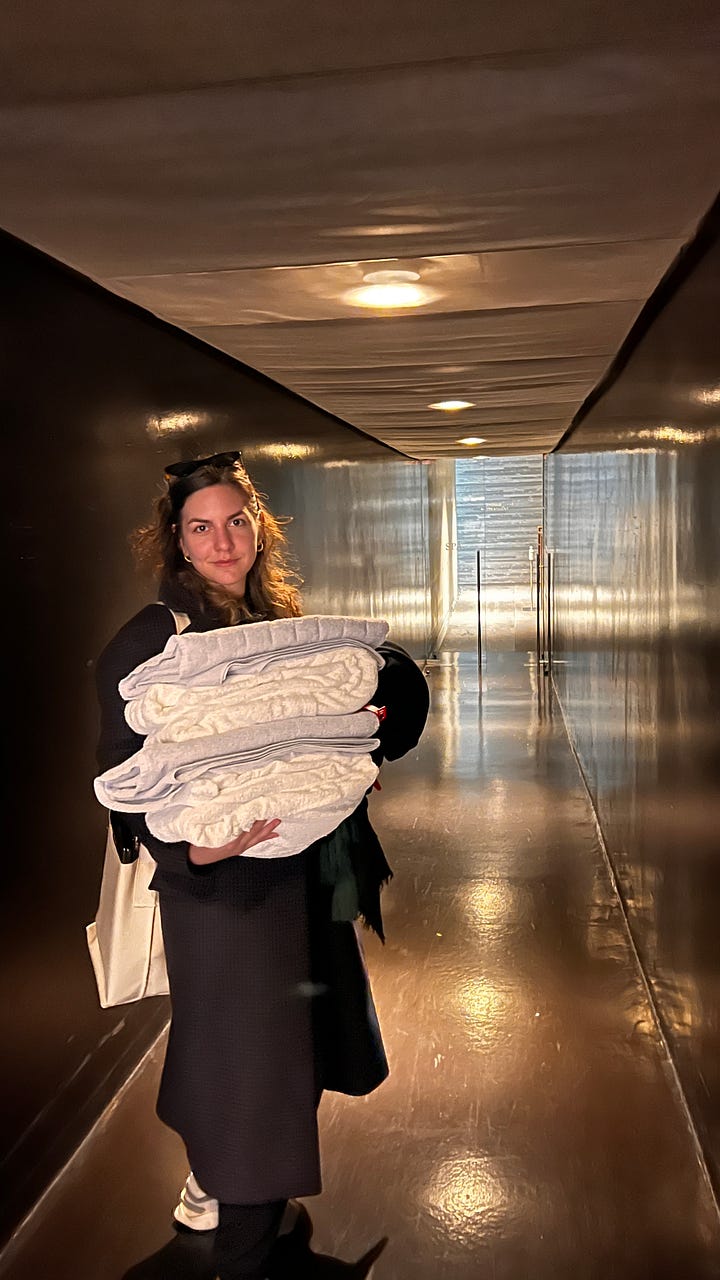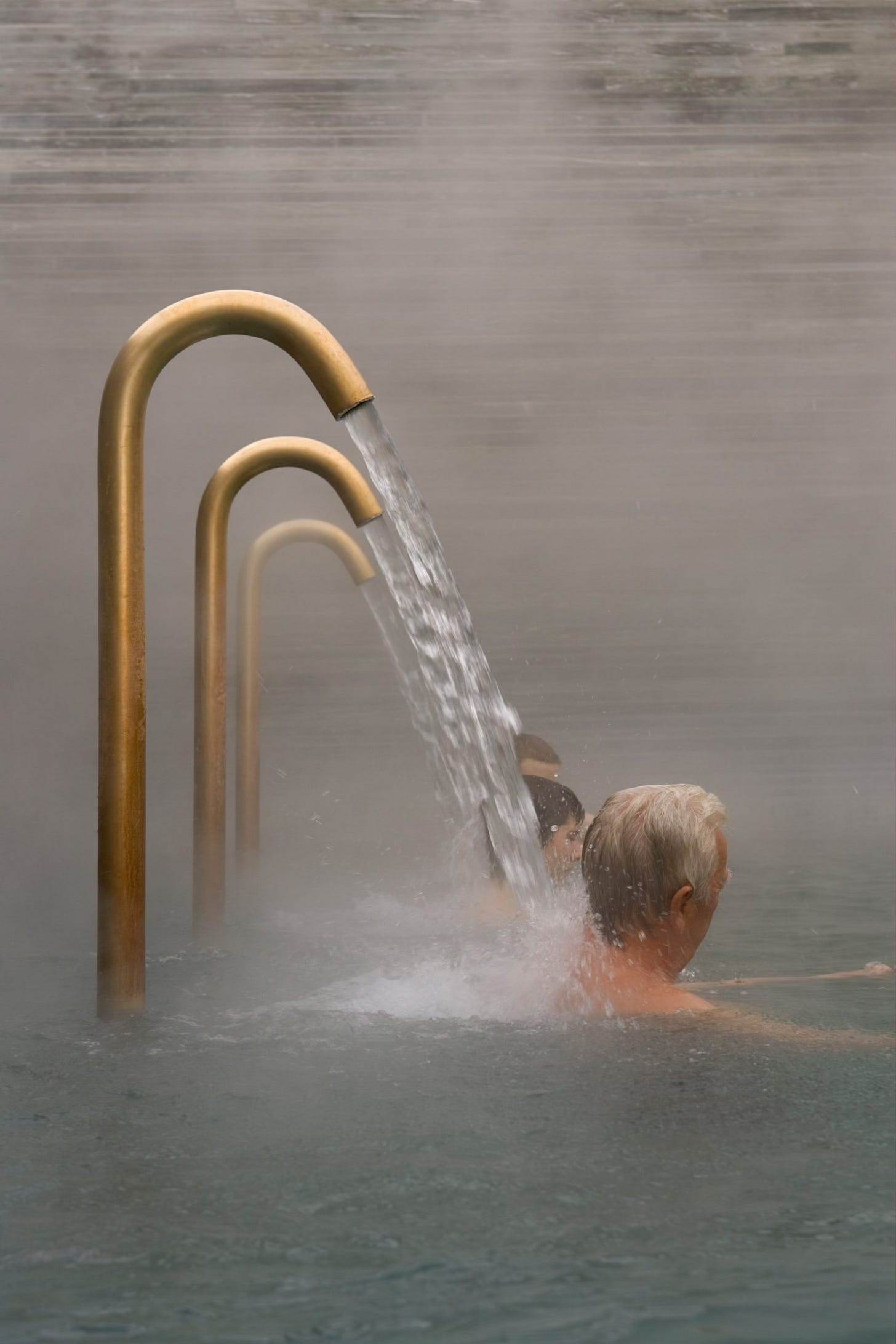In 2022, I visited my close friend Ece in Switzerland. One morning, between long train rides and slow coffee rituals, we took a winding route from Zurich into the mountains to visit 7132 Therme—the famous thermal spa designed by Peter Zumthor. I’d seen buildings that moved me, but Vals was something else. In architecture circles, the name precedes the place: a case study in a lecture or in theory class and a honeymoon destination for architect couples.
Today’s letter is my review of the Therme—though since photography forbidden and I can’t find images of the exact moments of my experience, I’ll be relying on memory and words. At the end: you’ll also find a curated list of what I read, researched, realized, and recommend re: Vals.
Arrival
Unlike other authors of reviews or design pilgrims, we did not arrive via private helicopter. We took a train, and then a bus, and then another smaller bus. (If you’re coming from any Swiss city, consider this your gentle warning: the only inconvenience is the commute.)
From the outside, 7132 Therme does not announce itself too loudly. It sits embedded into the alpine hillside, its modest, cave-like facade quietly gesturing to the mountain. It entertains the form of cave or quarry like structure. Designed in the mid-90s, Zumthor's approach was not to monumentalize but to disappear, and integrate. Inside, it’s made almost entirely of locally quarried Valser quartzite, arranged in horizontal strata that feel both ancient and modern.
We entered through the hotel lobby, received our robe and towel, and descended into a narrow corridor. We headed to the changing rooms, dropped everything off except for our robes and books we tucked conveniently in the pockets of our robes.


The architecture: “A bath born of the mountains”
Zumthor’s design ethos and philosophy is centered very deliberately around the idea of “atmosphere”—and how architecture can be senses before it’s understood. It can shape not just your experience of a place, but your experience of yourself in that place. Vals does that.
Zumthor writes in Thinking Architecture: “good architecture is able to move me. I think that the best architectural spaces are those that possess a compelling atmosphere.” He speaks of materials not as neutral elements but as things with presence and memory—wood that smells like forests, stone that carries geological time. Vals, in that sense, is a case study in his thinking. The materials do not decorate; they resonate. The quartzite stone was not just a nod to locality, but a tectonic and conceptual anchor. The weight, coolness, and grain of the stone—the way it absorbs heat and reflects water—all shape your bodily experience of the space. Even the way light enters is carefully choreographed: no direct glare, just diffused rays from above or from slits in the wall, like crepuscular light through alpine fog.
These are all part of the “bodily or physical event” that Zumthor believe his architecture to be—rather than being an abstract idea. His design process, more specifically, begins with a strong image; the idea is always accompanied by images in his design. Zumthor also mentions in an interview that he then makes sure this image becomes architecture.








